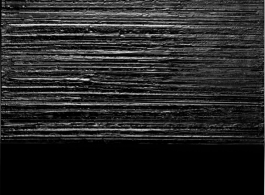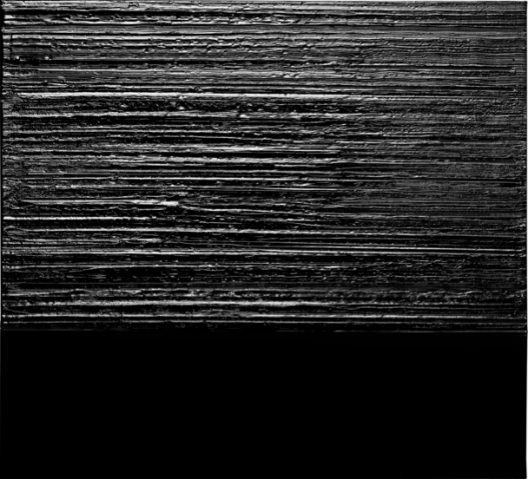Perrotin Tokyo – inaugural exhibition
On the occasion of the opening of Perrotin Tokyo, the gallery is honored to present a solo exhibition of Pierre Soulages, bringing together a collection of recent paintings.
Pierre Soulages has a special relationship with Japan, where his work was exhibited very early in his career and quickly enjoyed significant recognition. In 1951, his paintings were exhibited at the May Salon at Takashimaya. Soulages visited Japan for the first time six years later, during a long journey across Asia (Hong Kong, Cambodia, Thailand), taken upon the occasion of his participation in the Tokyo International Biennial, with his wife Colette and his friend, the painter Zao Wou-Ki. In 1969, the Tokyo MOMAT exhibited an ensemble of his canvases, before the major retrospective dedicated to him by the Seibu Museum of Art in Tokyo, for which Pierre Soulages returned to Japan with his wife. This exhibition then traveled to Korea, China and Taiwan. In 1992, Pierre Soulages was bestowed the Praemium Imperiale.
Since, Pierre Soulages’ œuvre has been presented in several collective shows in Japan, recently at the Royal Museum of Ueno in Tokyo in 2008, at the Bridgestone Museum of Art of Tokyo in 2011, and again at the Suntory Museum of Art in 2017. His works are included in several public collections in Japan: the National Museum of Modern Art in Tokyo, the Hakone Museum of Art, the Bridgestone Museum of Art in Tokyo, the Museum of Fine Arts in Gifu, the Ohara Museum of Art in Kurashiki, Okayama, and the Sezon Museum of Modern Art in Karuizawa.
“Soulages is not only the most famous living French painter, he is a giant of painting. Today his work is shown in 110 museums around the world and has been exhibited on every continent. Soulages once said that he was truly born from painting. It was in Paris, at the end of the 1930s, that he discovered the masterpieces of Western classical and modern art: at the Louvre, at exhibits of Picasso and Cézanne, and at the Orangerie in the Tuileries, in front of Monet’s “Nymphéas.” But it was after the war, in 1946, that he effectively became an artist and began his body of work.
After that, everything moved extremely quickly. In a few years, he enjoyed national and international recognition. He exhibited for the first time in 1947, at the Salon des Surindépendants in Paris, where his somber paintings, cutting edge among the typical colorful paintings of the period, immediately caught the eye of renowned art world elders like Hans Hartung and Francis Picabia. The following year, he was chosen to participate in Germany’s first post-war exhibition of French abstract painting, which toured all major German cities. There, he showed paintings of walnut stain on paper and paintings on canvas, of which one piece was chosen by the exhibition organizer for its poster. Soulages soon was the subject of solo exhibitions in Paris, Copenhagen, Munich and, from 1954 on, New York.
His radically abstract painting makes reference neither to images nor to language. It offers neither representation, nor figuration, nor narration, nor message, and yet it is not pure formalism: it accepts that the viewer interprets it freely for himself. An absolutely original body of work, forcefully disruptive, that does not resort to the crutch of a reference, even indirect, to the outside world, either in its forms or its titles, as opposed to many of the informal or non-figurative abstract works of the period. By the same token, Soulages’ œuvre requires its viewer to address the question of meaning himself. In 1948, on the occasion of the exhibition in Germany, Soulages wrote this striking formula: Painting is an organization, a collection of relationships between forms (lines, colored surfaces) on which the meanings we attribute to it come together and break apart.
Emerging at the beginning of the 1970s, after 33 years of painting, or right in the middle of Soulages’ activity between 1946 to today, “outrenoir” was a profound disruption that inaugurated a new kid of painting, without interrupting the overall coherency of his œuvre. As always, since his first works in 1946, and even since his childhood, Soulages interrogated the relationship between light and dark, but from this point on he used the light outside of the canvas, which he considered his own veritable instrument. Among the numerous exhibitions to present this major evolution on all continents, we particularly recall those of Paris (1979), Salzburg (1980), Copenhagen (1982), Tokyo (1984), Melbourne (1989), as well as those of Seoul, Beijing and Taipei (1994), Paris, Montréal and São Paulo (1996), Saint Petersburg and Moscow (2001), New York (2005 and 2014) and the great retrospective at Centre Pompidou in Paris (2009).
Since 2004, Soulages no longer works with oils, but with resins that provide him thicknesses of paint that he had never before attained. A new kind of work with light, via reflection, appeared: on the peaceful clarity of a vast surface of solid black, he engraves one or two very deep scarifications, sensual wide gashes, in which a vivid light settles to further accentuate the mystery. Most recently, Soulages has used the contrast between glossy or semi-glossy black and matte black, offering never before seen views of pictorial light.
“With “outrenoir”, Soulages recently stated, the viewer is much more implicated, much more alone. I think that I make paintings so that anyone who looks at them, whether it’s me or anyone else, can find himself in front of a painting, alone with himself. Soulages’ painting, whether on canvas, on paper or expressed in stained glass, in representing nothing, and reflecting nothing, reflects myself back to me. Because it calls for no decoding, no imposition of meaning, it invites me to constitute meaning in myself.”




